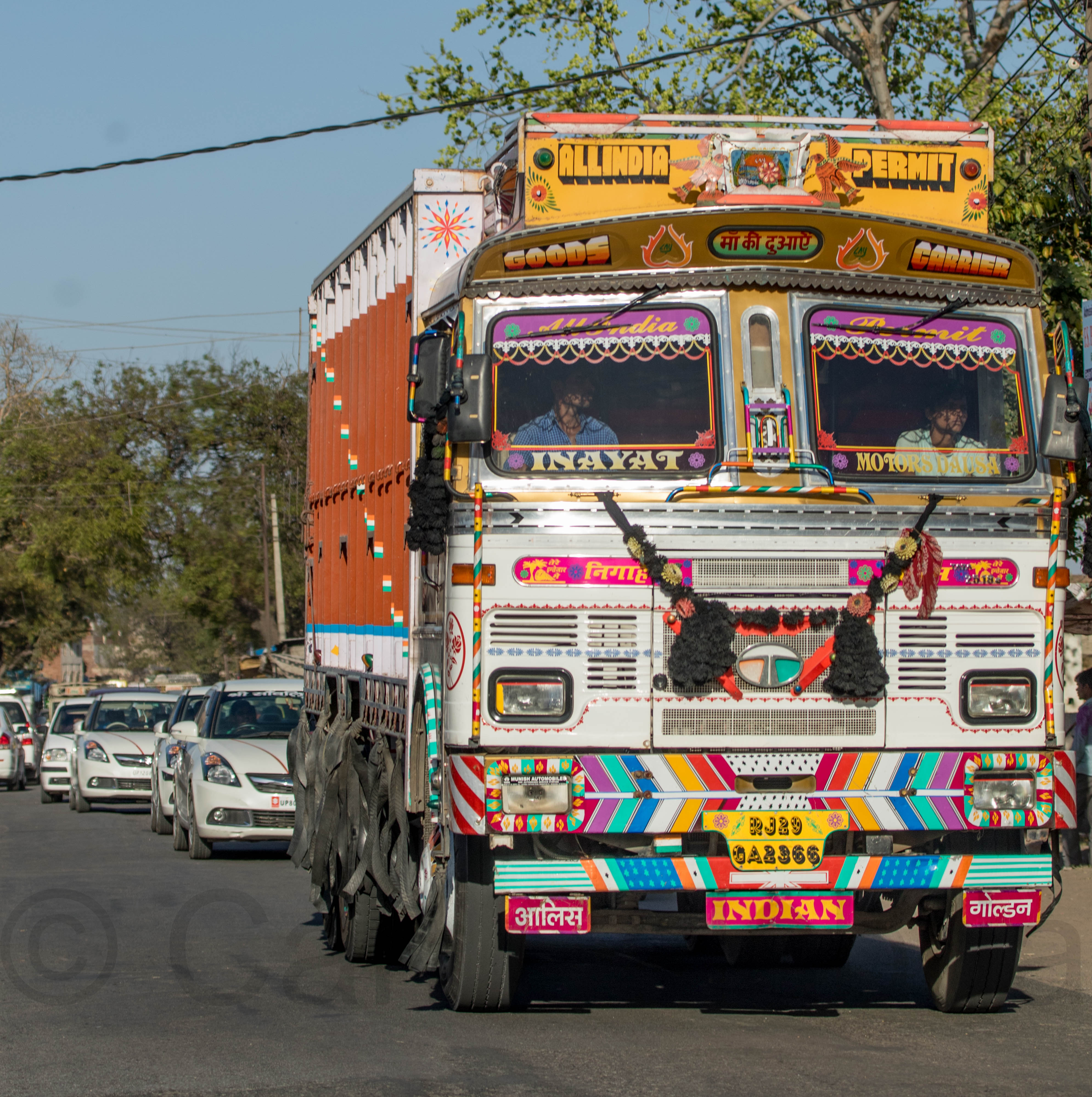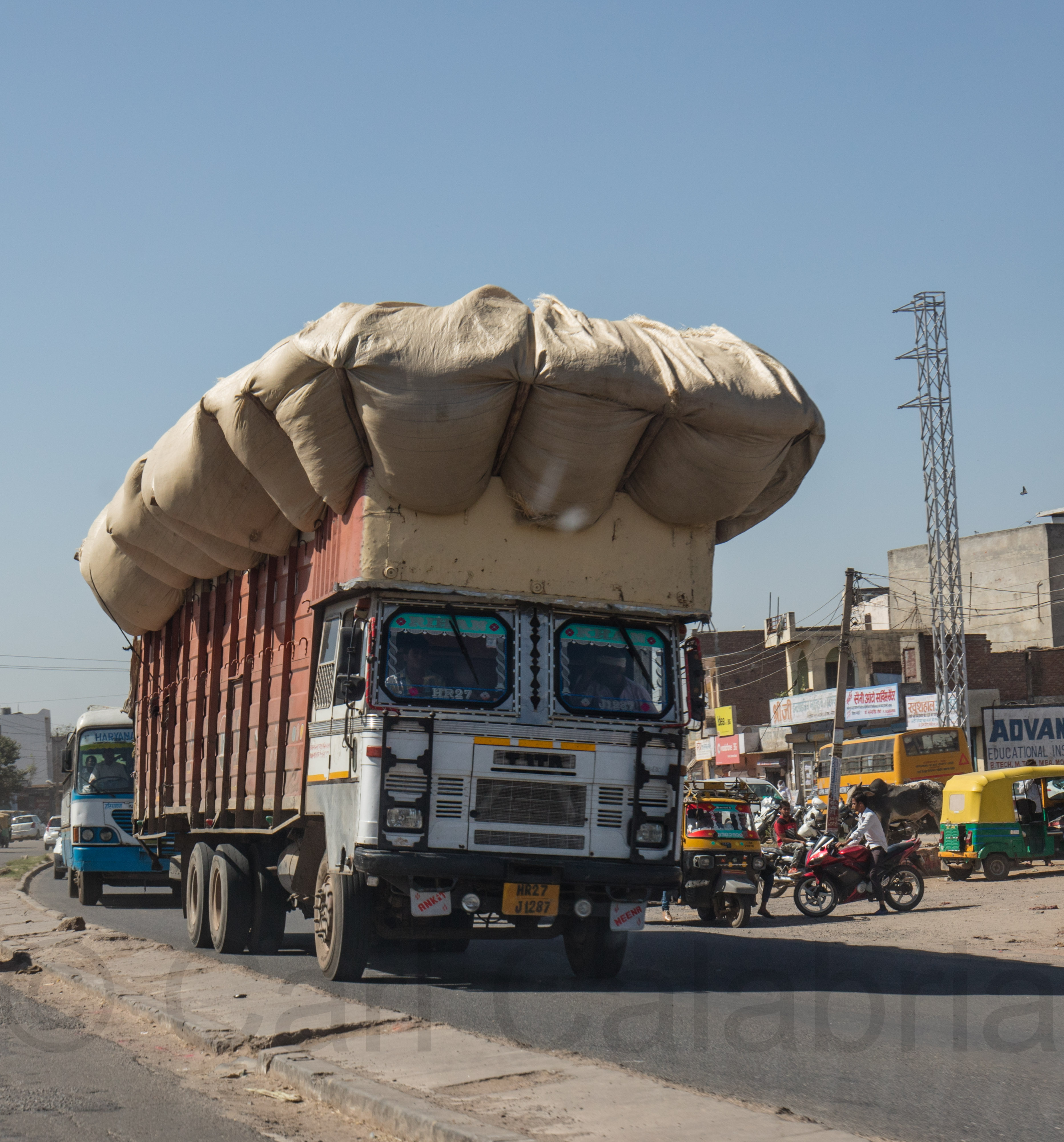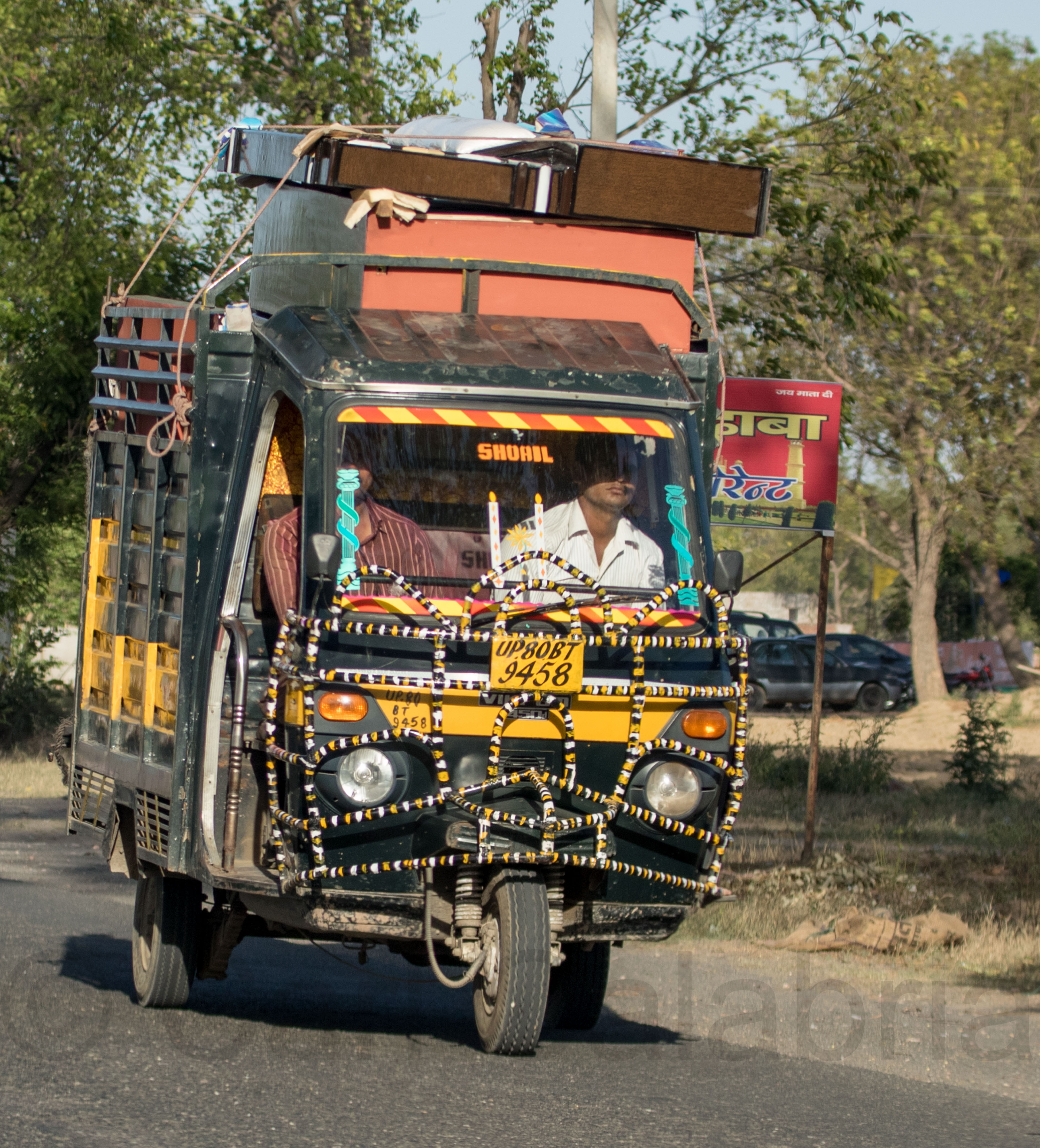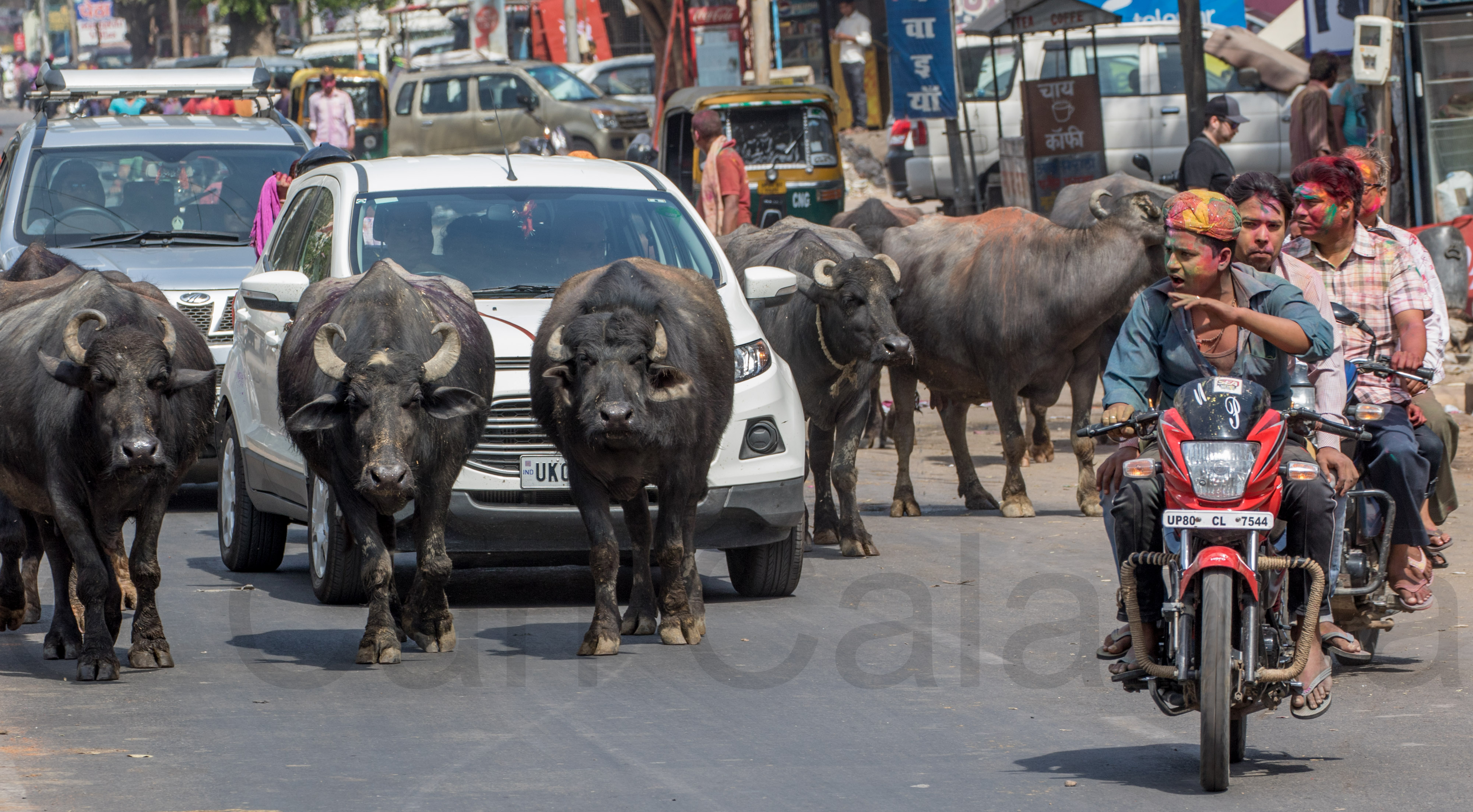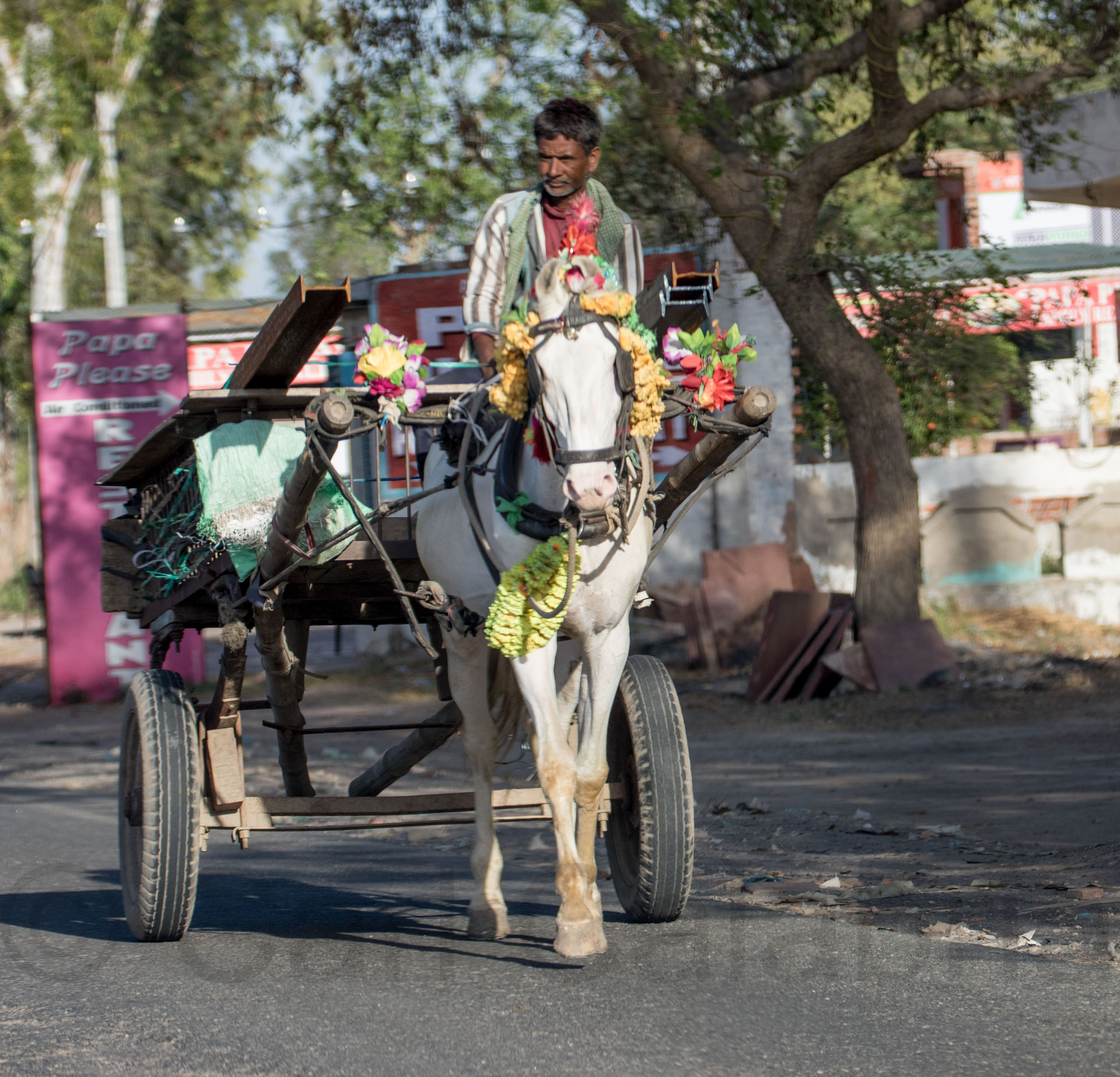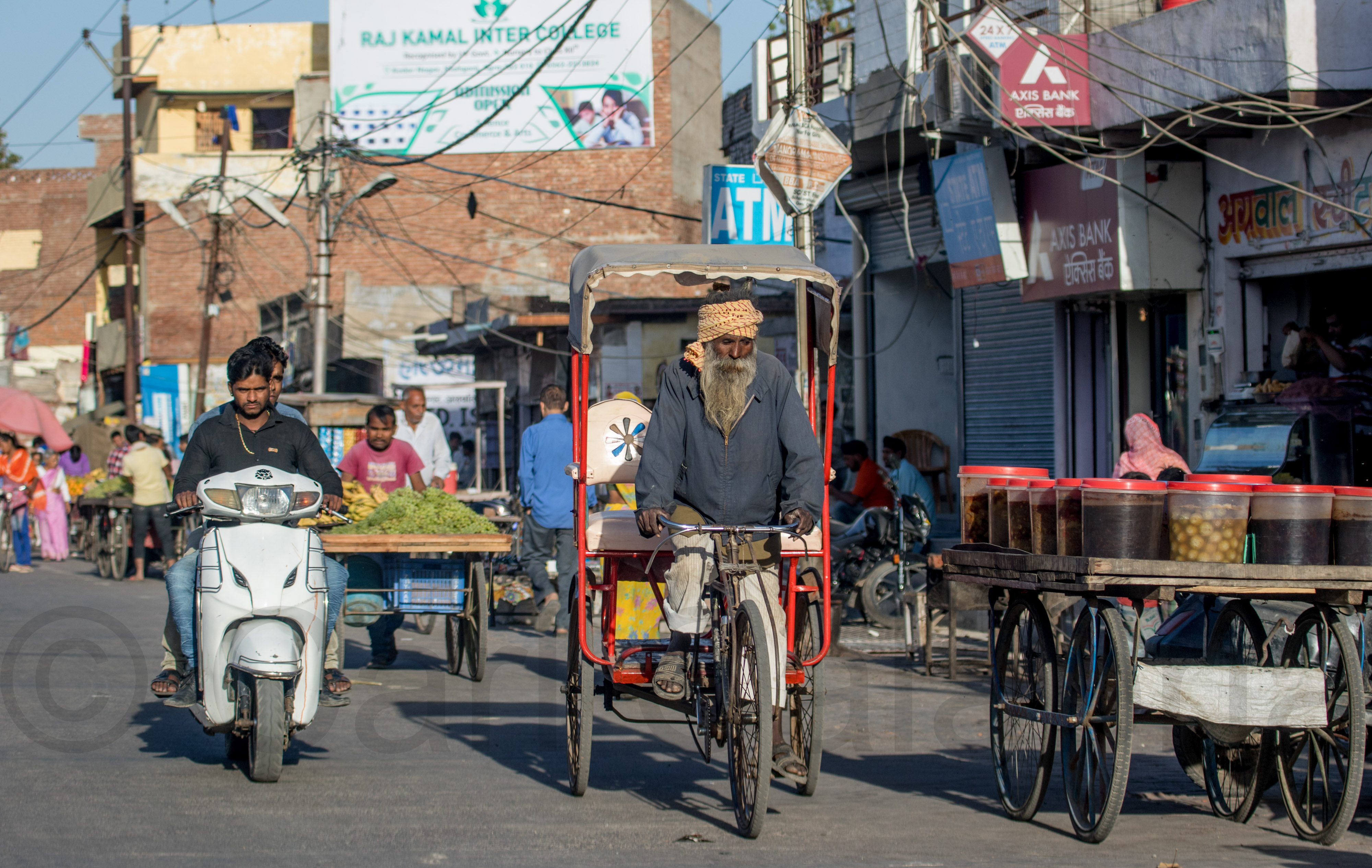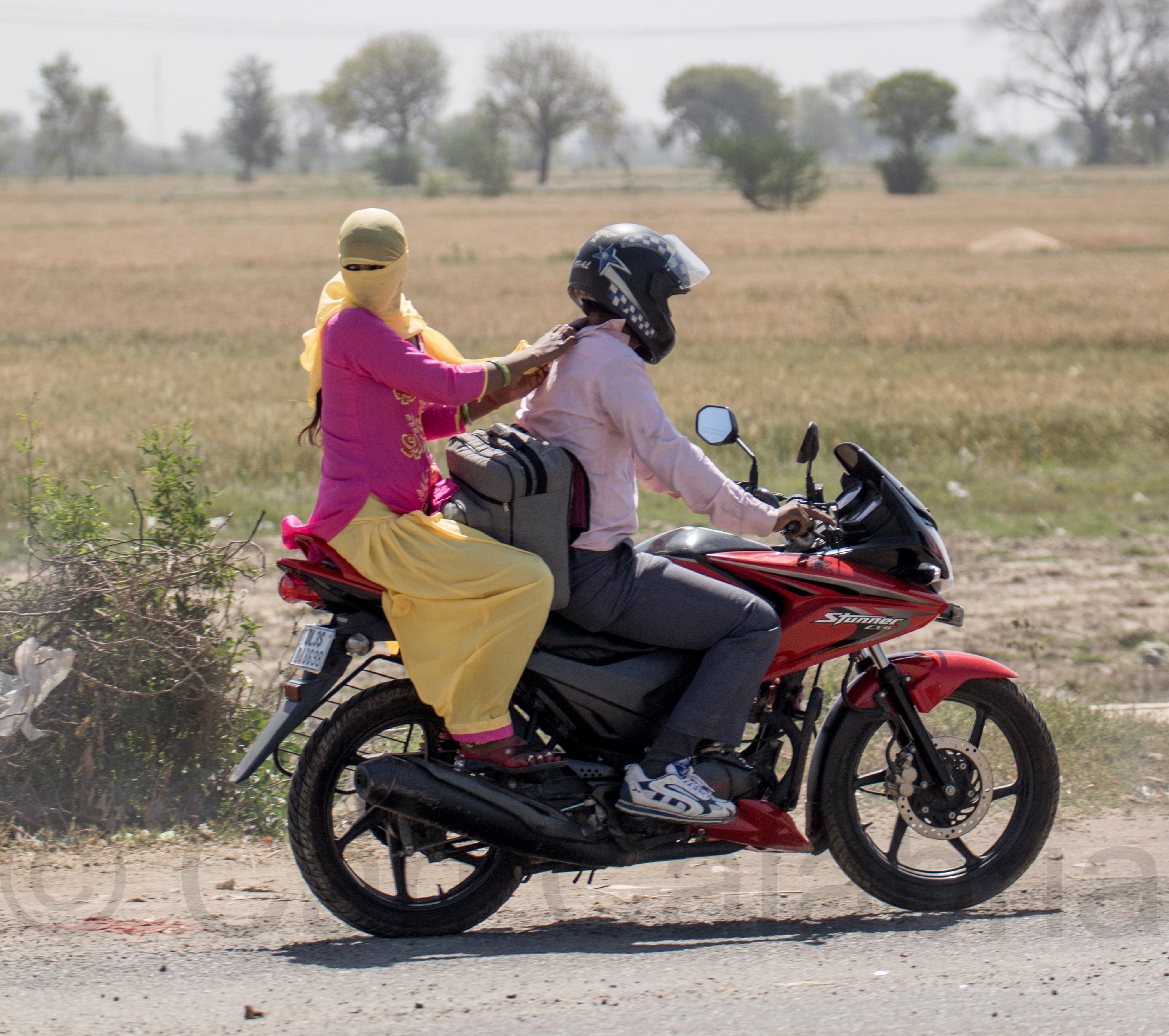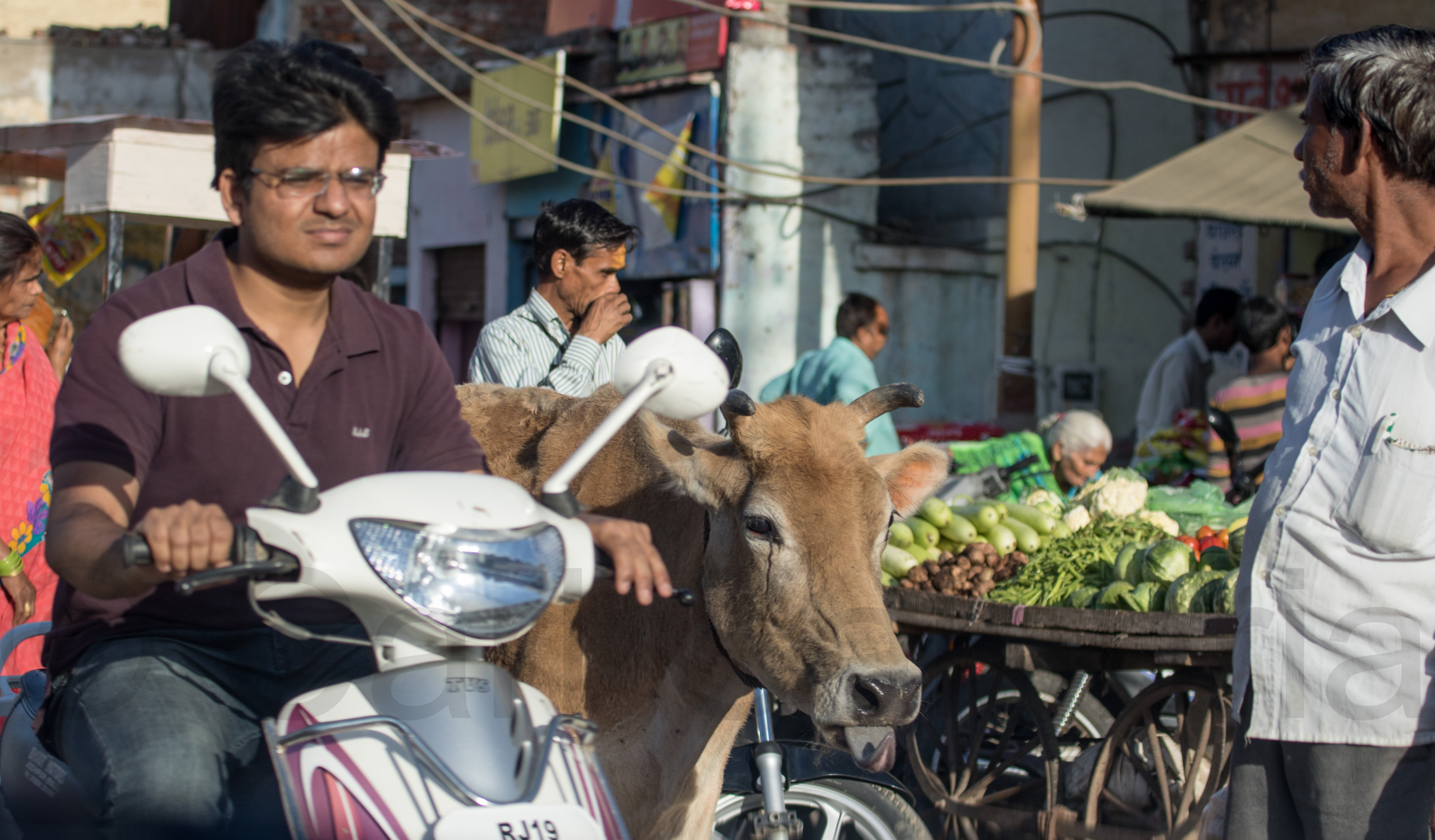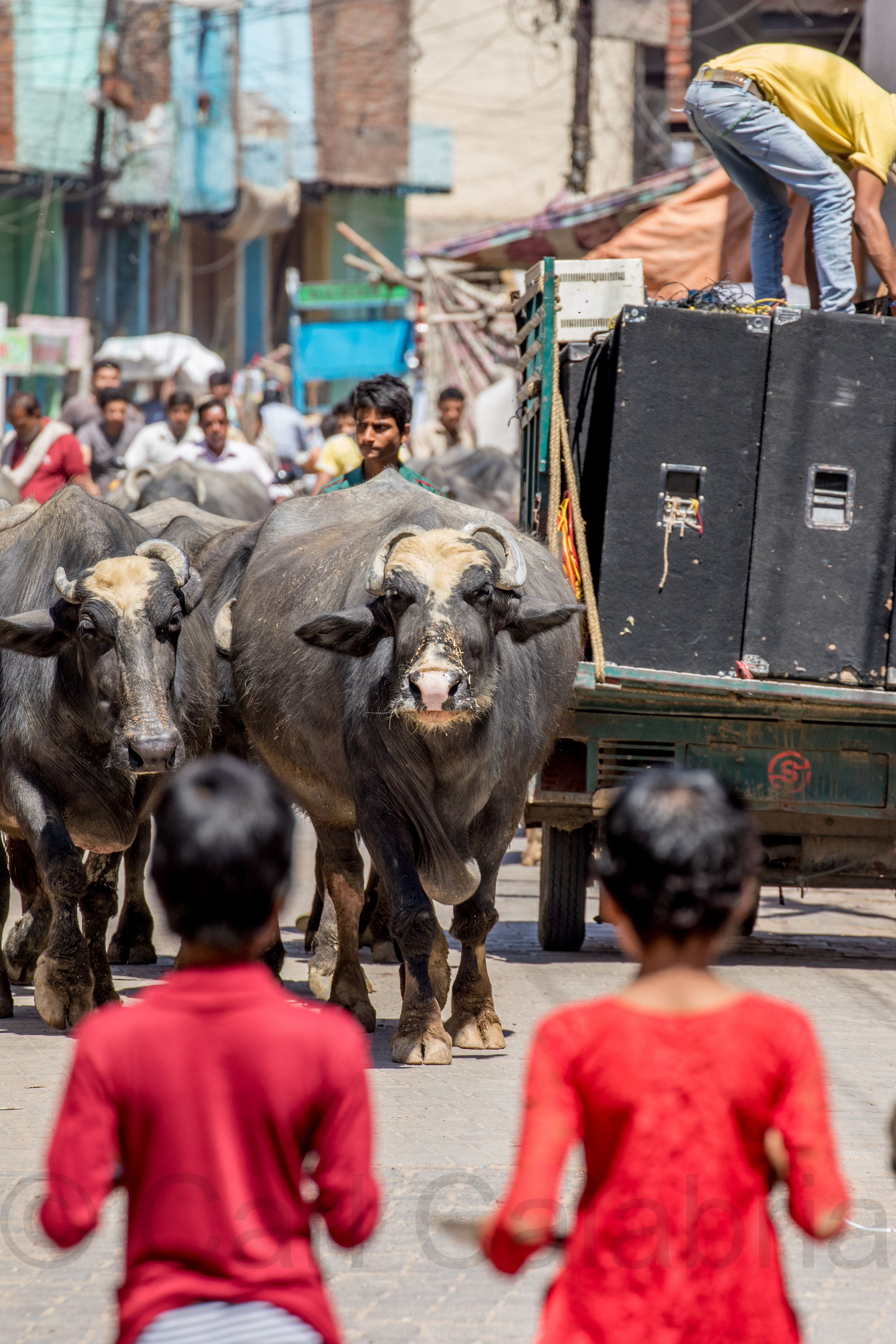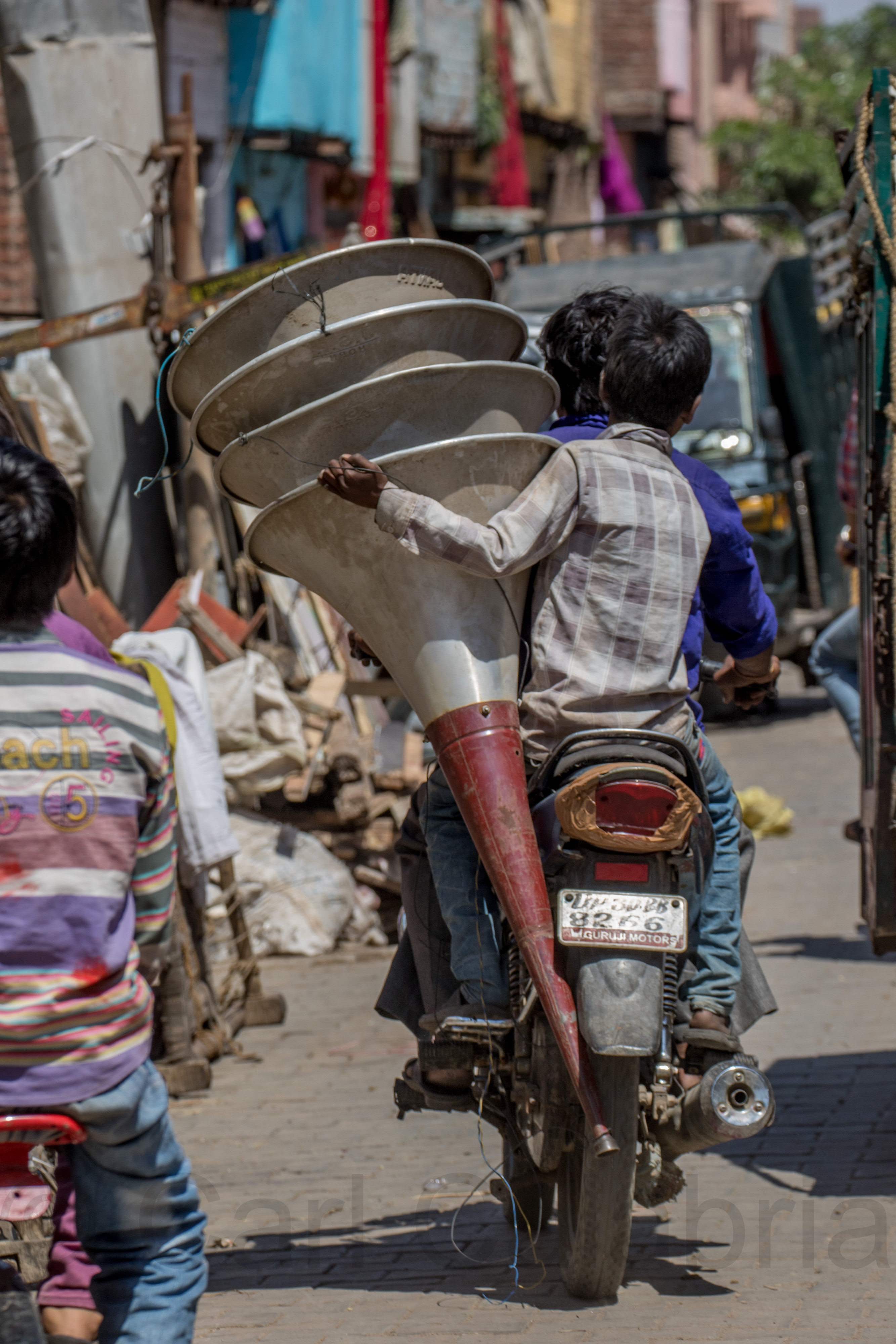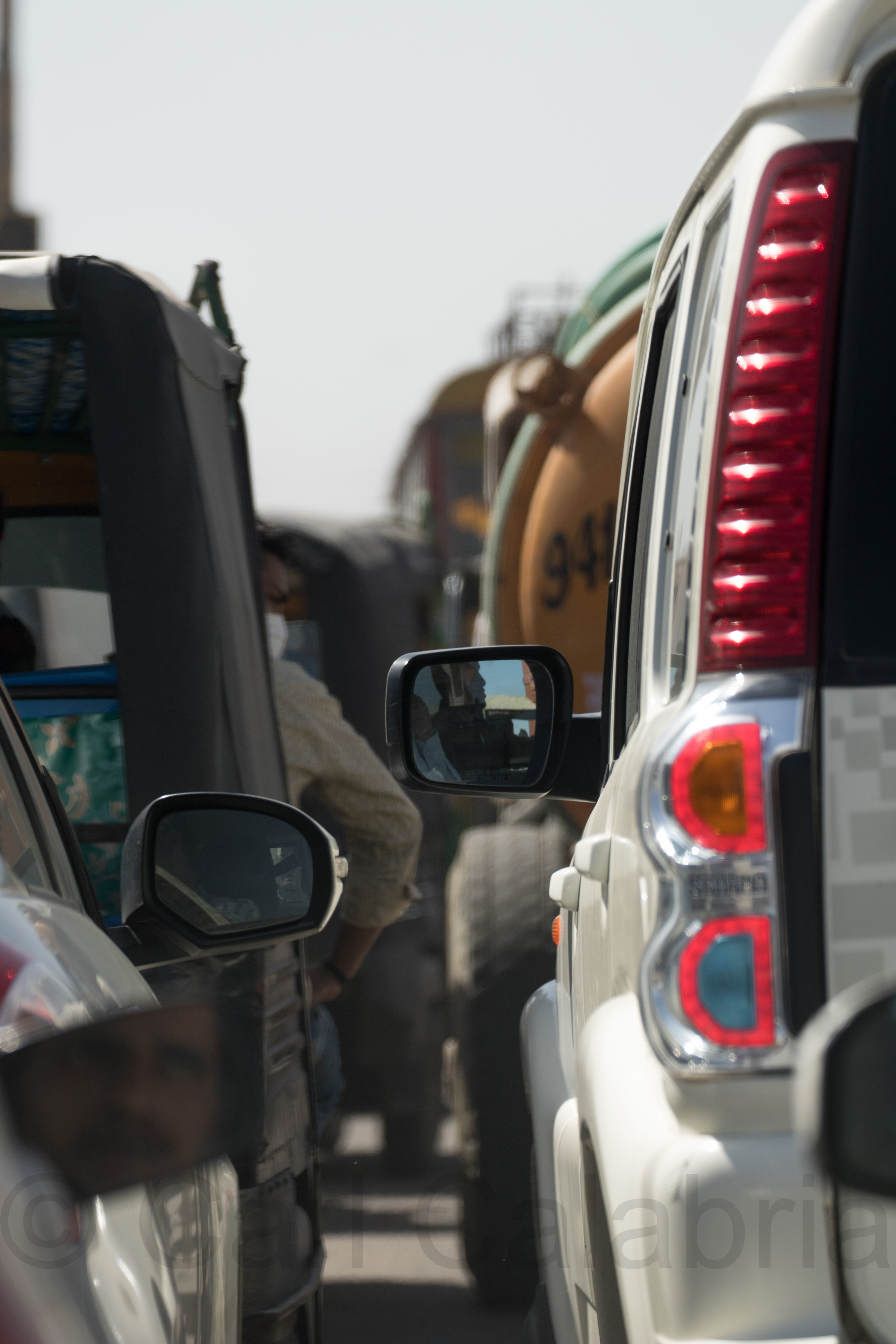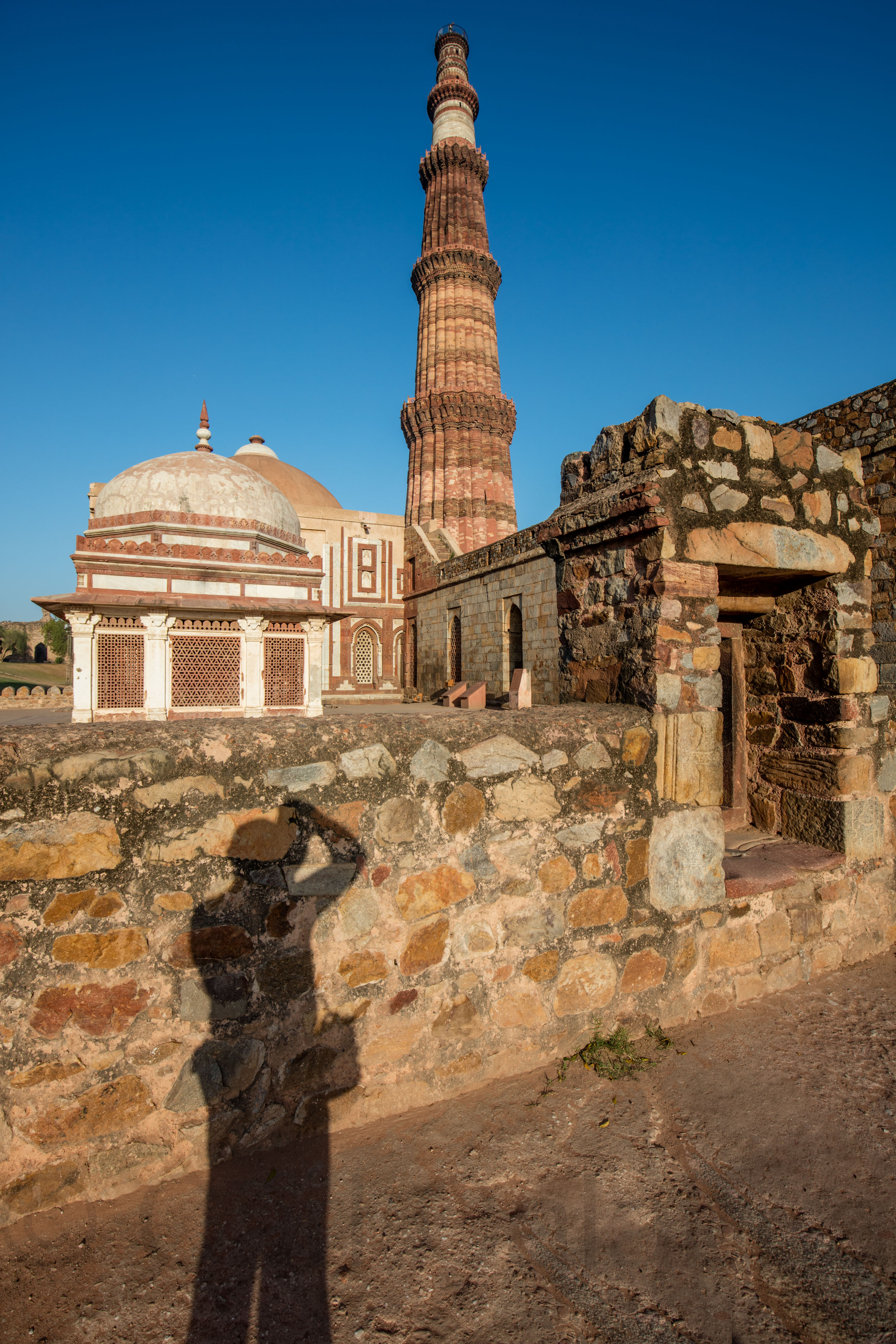
I returned briefly to Qutub Minar to photograph with early morning light and used the opportunity to make several nice shadow self-portraits. The early hour also ensured an absence of tourists.
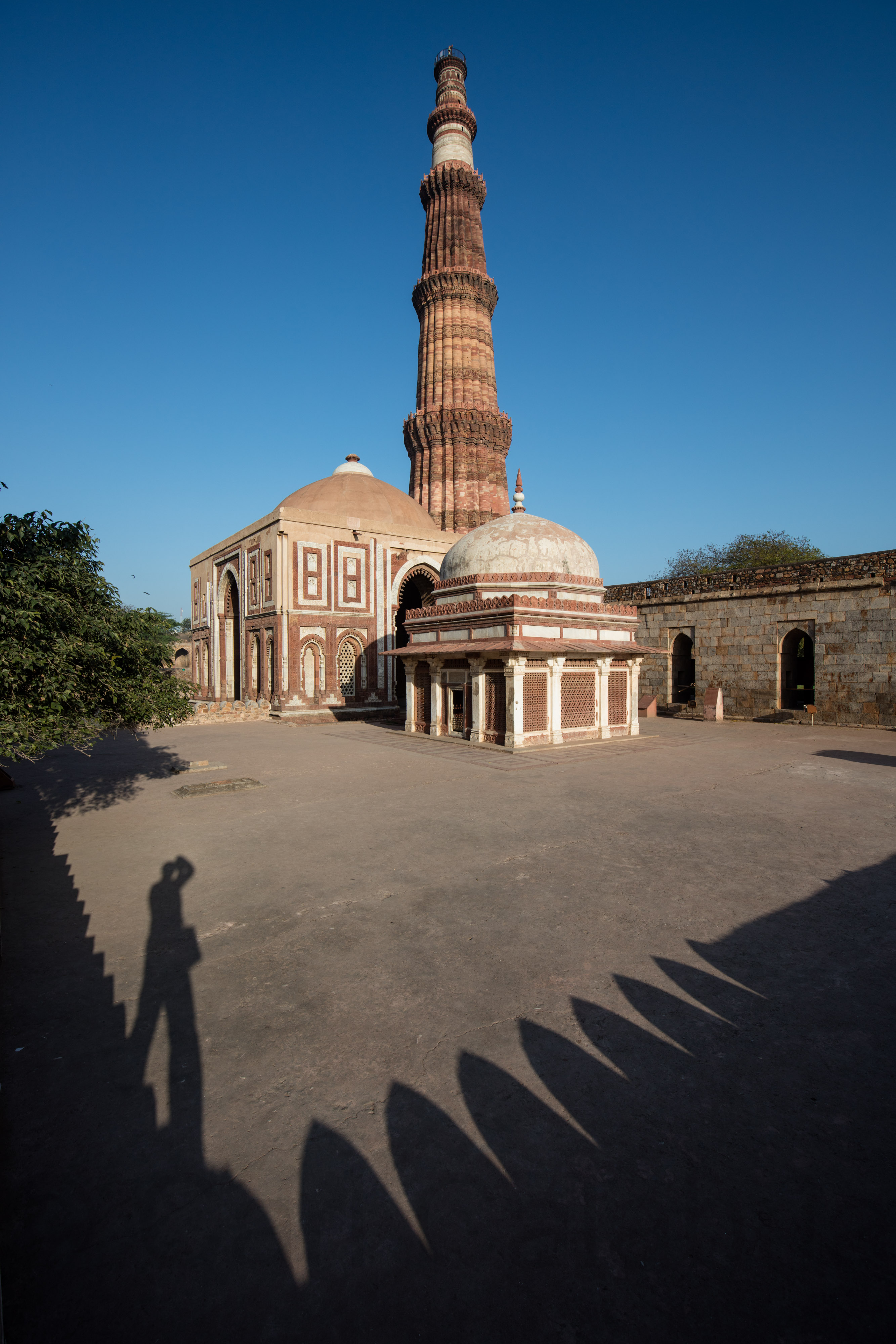
Built during the second half of the 16th century by the Emperor Akbar, Fatehpur Sikri (the “City of Victory”) was the capital of the Mughal Empire for only some 10 years. The complex of monuments and temples, all in a uniform architectural style, includes one of the largest mosques in India, the Jama Masjid. The journey from Delhi by car took half the day and I experienced a full dose of the insanity that is driving in India.
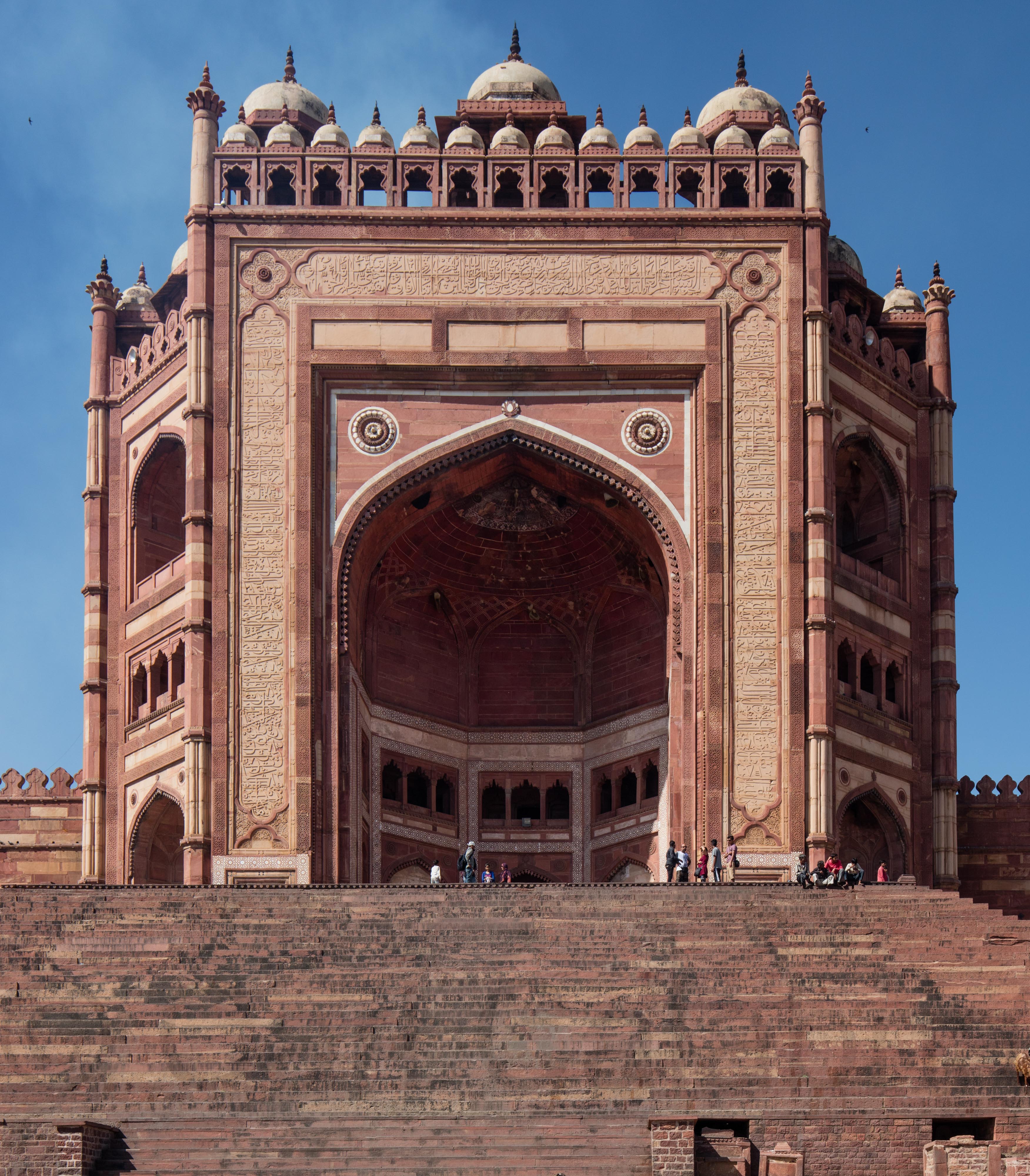

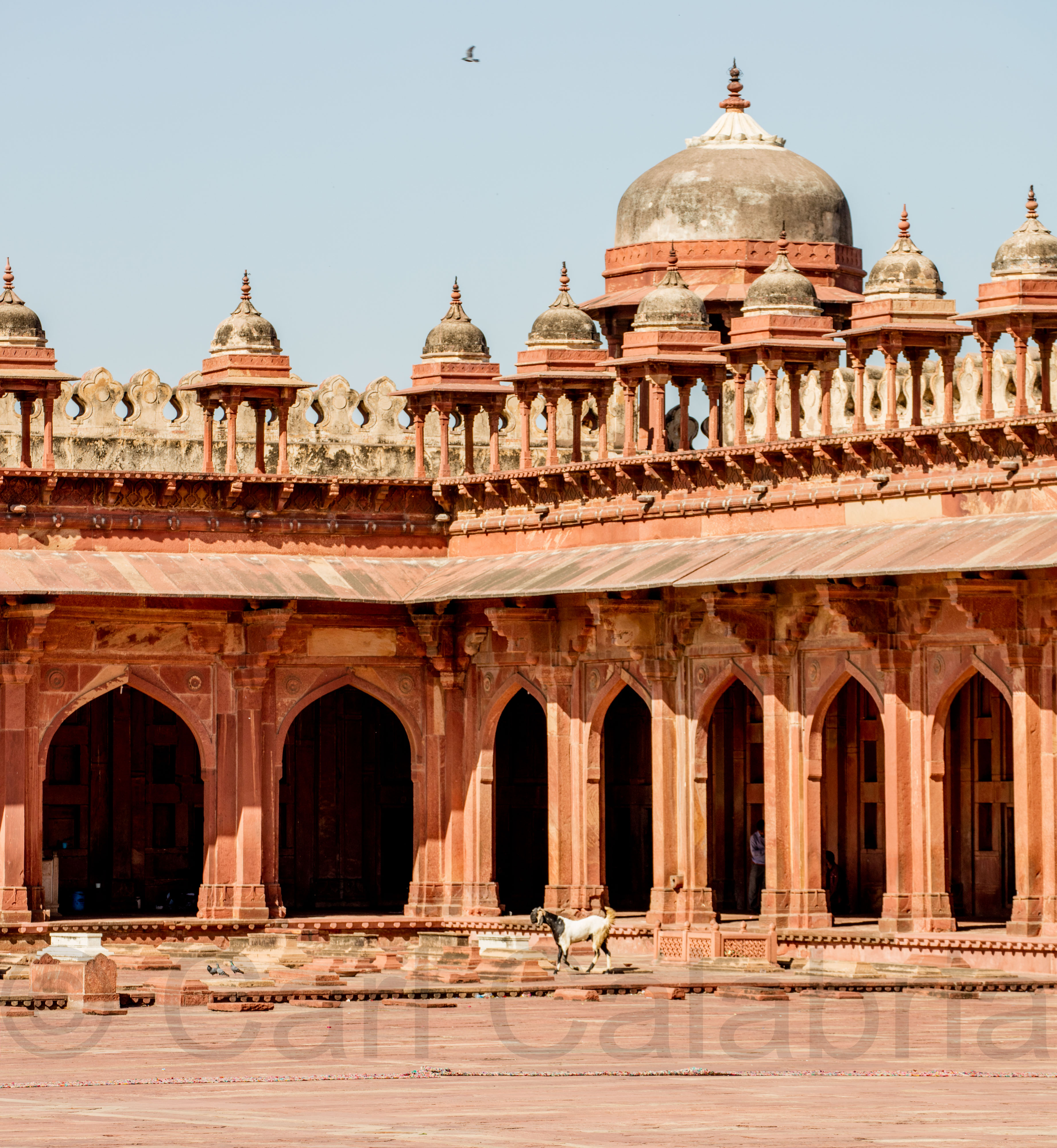
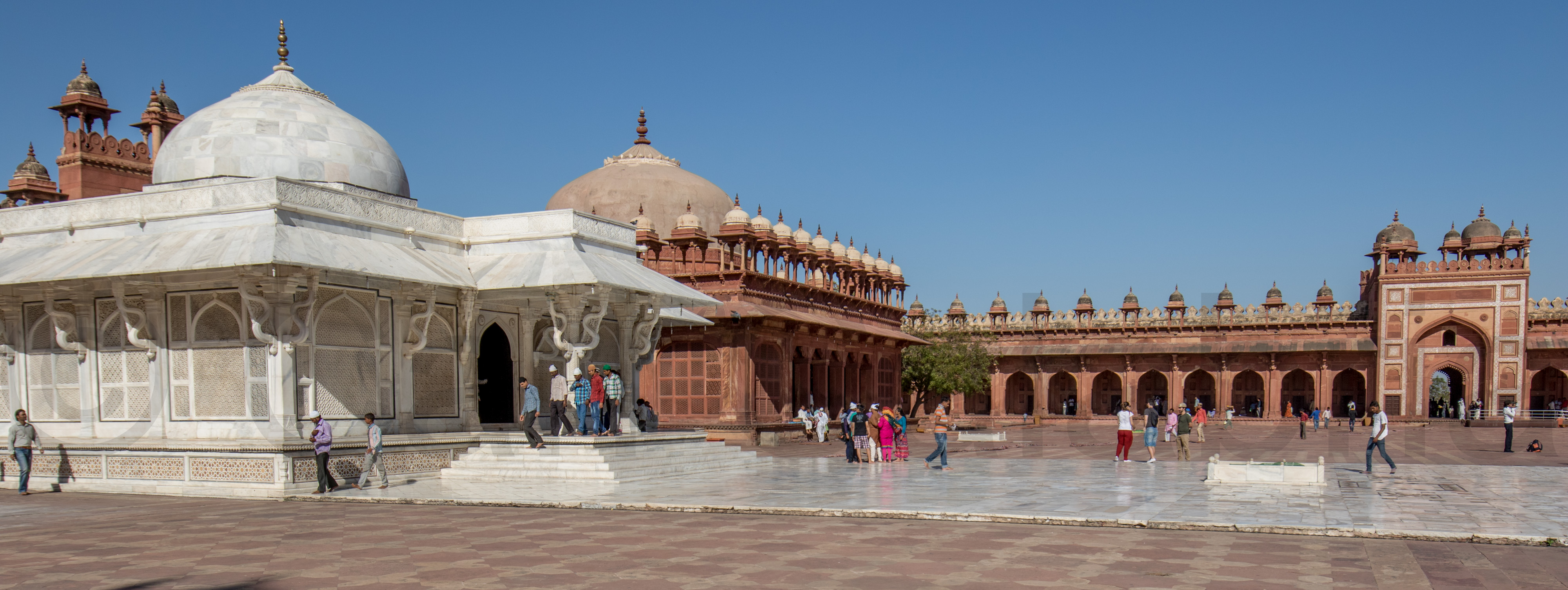
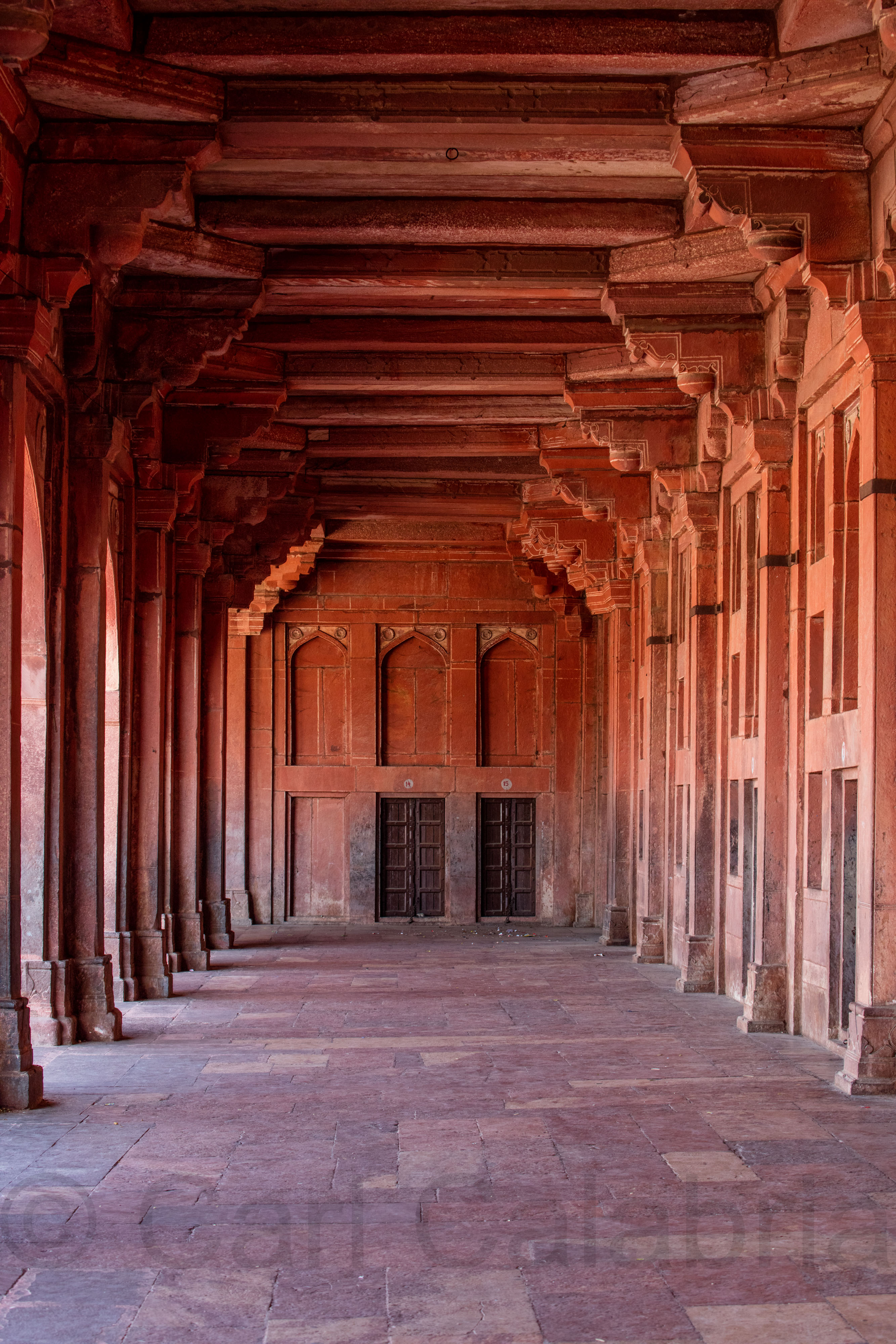
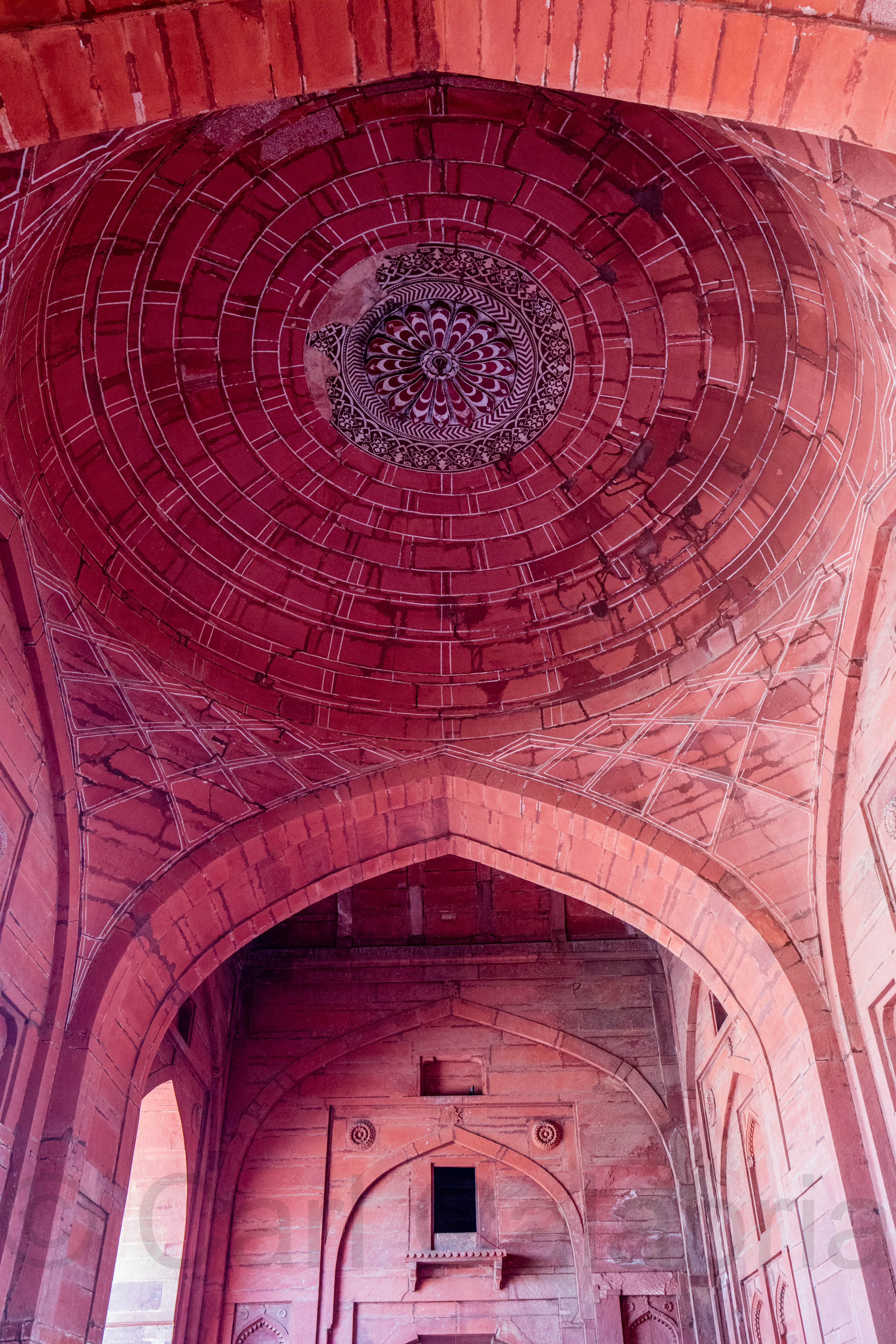
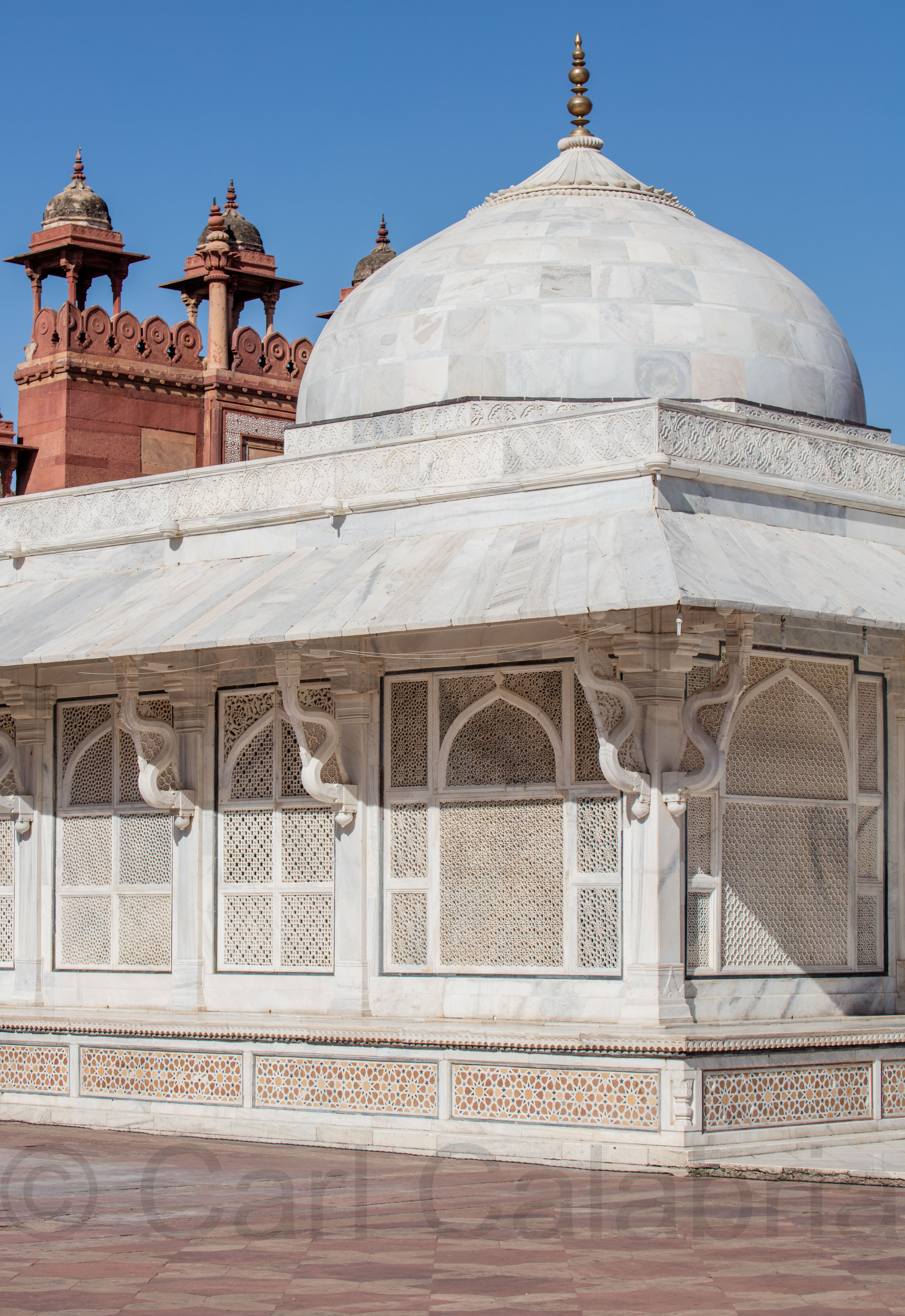
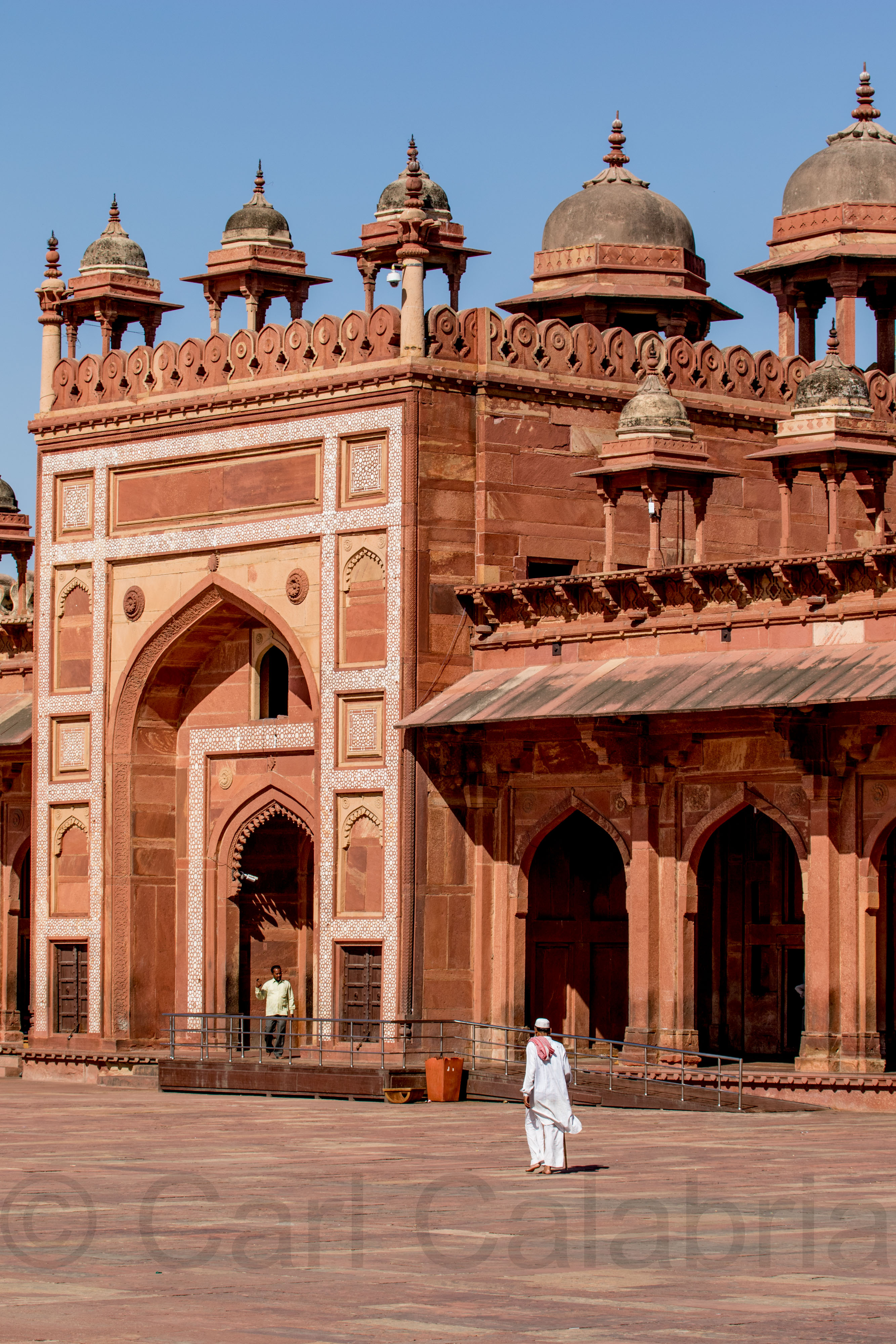
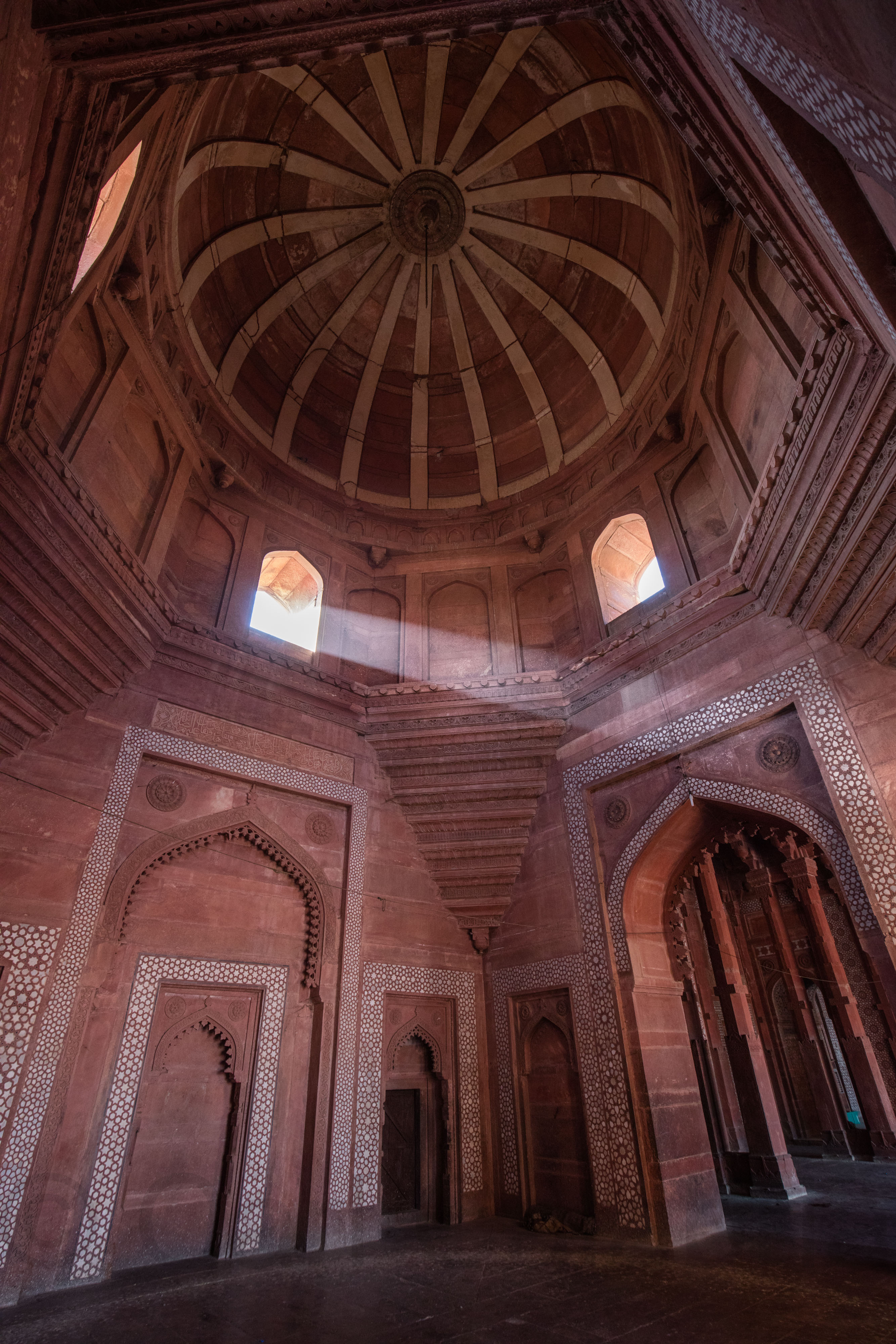
Of all the countries I have visited, I would say that driving in India is the least structured and most chaotic. Surprisingly, there do not seem to be as many accidents as you might otherwise assume. The entirety of the traffic code seems to include only one rule – don’t hit anything (too hard) with your vehicle. Lane markers have no significance whatsoever. Direction of travel on either side of the road is only a loose concept. Traffic signals, little more than decorations. Sidewalks, if not cluttered, are fair game for anything that will fit on them. Horns are used constantly to let those in front of you know that you are passing them with a few inches of clearance. In fairness to India, their traffic system must accommodate an enormous variety of users. You have your elephants, your cows, horse and oxen drawn carts, people powered bicycles, tricycles and push carts, tuk-tuks, buses, trucks, pedestrians, motorcycles, scooters, oh yes and cars, all traveling at very different speeds on roadways often in dire need of repair or clogged with commerce. The only effective traffic controls are the ubiquitous and often unmarked speed bumps. Fail to slow down for one of these and you are guaranteed a damaged suspension.
